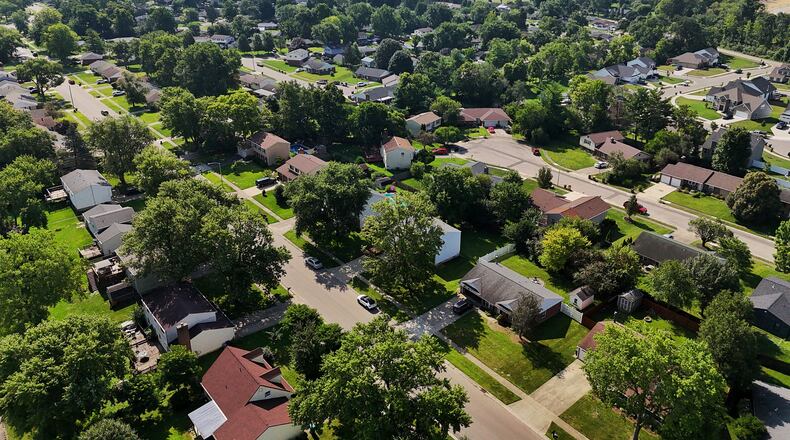Ohio is on the middle of the North American tectonic plate and far from any active plate boundaries, according to ODNR’s Division of Geological Survey.
In contrast, California, which has thousands of earthquakes a year, is on an active boundary between the Pacific and North American plates. The two plates grind against each other along the San Andreas Fault system, according to ODNR.
“The faults underlying Ohio are deeply buried and have very long recurrence intervals that span longer than human lifetimes,” ODNR said. “Seismic recording has only been present in Ohio for approximately 100 years, while these deeply buried faults could produce recurring earthquakes on the order of hundreds of years or longer.”
Although there is no plate boundary in Ohio, a long geologic time ago the Appalachian Mountains were built by plate boundary activity, said Mike Brudzinski a professor of geology and environmental earth science at Miami University with a Ph.D. in geophysics and a specialty in seismology.
The recent quake recorded in Springboro doesn’t appear to be connected to any sort of main shock in recorded history, he said.
“It could be from a big earthquake that happened 50,000 years ago and so now we’re just getting this really late aftershock that pops up,” Brudzinski said. “It’s speculative because we don’t know if there was an earthquake 50,000 years ago, but at this point we don’t see any sort of recent evidence for activity that would cause that kind of earthquake to happen.”
Earthquakes are primarily driven by elastic rebound, he said.
The plate tectonics that move the plates over a long geological time forces rocks to scrape past one another, either up, down, side to side. In essence, Brudzinski said it’s that grinding of the rocks is where all earthquakes form.
“And where does that energy come from? The plates keep moving even though their edges get stuck,” he said. “… Eventually the rocks break and then that’s when the two sides can sort of slide and catch up to the rest of their plate. That snapping, when the rocks would break and things can move again, that’s the earthquake. It generates a bunch of vibration, it sends out those waves that can cause damage.”
Earthquakes are measured using magnitude and the Modified Mercalli Intensity Scale.
The scale goes from I, which is only detected by sensitive instruments, to XII, which includes objects being thrown into the air and waves visible on ground surfaces and sightlines.
Generally, a level III is when people start to feel an earthquake a bit more broadly, Brudzinski said.
There have been nine earthquakes recorded in the Miami Valley as far back as 1843, according to ODNR data.
No earthquakes have been reported in Butler, Miami and Preble counties.
According to ODNR, the following earthquakes have been reported in the Miami Valley:
Champaign County
June 18, 1875
• Epicenter: Adams Twp., near Elm Tree Road North and Licklider Road
• Magnitude: 4.7
• Depth: 0 mile
June 19, 1843
• Epicenter: Outside of Urbana, near the Mad River, U.S. 36 and Bair Road
• Magnitude: 3.5
• Depth: 0 mile
Clark County
Oct. 4, 1980
• Epicenter: Green Twp., near South River Road and Garlough Road
• Magnitude: 2
• Depth: 0 mile
Darke County
Jan. 2, 2023
• Epicenter: Northwest of Versailles, near Brown Road and Shaffer Road
• Magnitude: 2.2
• Depth: 1.5 mile
Greene County
March 27, 1925
• Epicenter: Yellow Springs, near Greene Street and West South College Street
• Magnitude: 3.4
• Depth: 0 mile
Montgomery County
April 20, 1950
• Epicenter: Dayton, near Ridge Avenue and Pinecrest Drive
• Magnitude: 3.1
• Depth: 0 mile
April 23, 1873
• Epicenter: Kettering, near Big Hill Road and Tait Road
• Magnitude: 3
• Depth: 0 mile
Nov. 20, 1834
• Epicenter: Miamisburg, near the Great Miami River, Chautauqua Road and Farmington Road
• Magnitude: 3.5
• Depth: 0 mile
Warren County
Aug. 31, 2025
• Epicenter: Springboro, near Pinecone Lane and Evergreen Drive
• Magnitude: 2.3
• Depth: 11.5 miles


